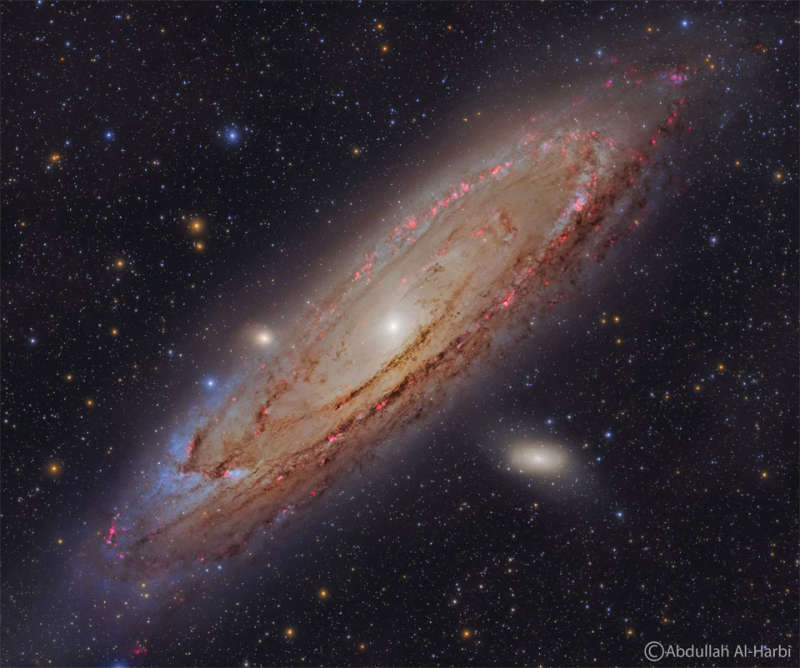Credit & Copyright: Abdullah Al-Harbi
Explanation:
How far can you see?
The most distant object easily visible to the unaided eye is M31, the great
Andromeda Galaxy, over two million
light-years away.
Without a telescope, even this immense
spiral galaxy
appears as an unremarkable, faint,
nebulous cloud in the
constellation Andromeda.
But a bright white nucleus, dark winding dust lanes, luminous blue spiral arms,
and bright red emission nebulas are recorded in
this stunning fifteen-hour telescopic digital mosaic of our
closest major galactic neighbor.
But how do we know
this spiral nebula is really so far away?
This question was central to the famous
Shapley-Curtis
debate
of 1920.
M31's great distance was determined in the 1920s by
observations that resolved individual stars
that
changed their brightness
in a way that gave up their true distance.
The result proved that
Andromeda is just like our
Milky Way Galaxy -- a conclusion making
the rest of the universe
much
more vast
than had ever been
previously imagined.
1999 2000 2001 2002 2003 2004 2005 2006 2007 2008 2009 2010 2011 2012 2013 2014 2015 2016 2017 2018 2019 2020 2021 2022 2023 2024 2025 |
Yanvar' Fevral' Mart Aprel' Mai Iyun' Iyul' Avgust Sentyabr' Oktyabr' Noyabr' Dekabr' |
NASA Web Site Statements, Warnings, and Disclaimers
NASA Official: Jay Norris. Specific rights apply.
A service of: LHEA at NASA / GSFC
& Michigan Tech. U.
|
Publikacii s klyuchevymi slovami:
Andromeda galaxy - Tumannost' Andromedy - M 31
Publikacii so slovami: Andromeda galaxy - Tumannost' Andromedy - M 31 | |
Sm. takzhe:
Vse publikacii na tu zhe temu >> | |
